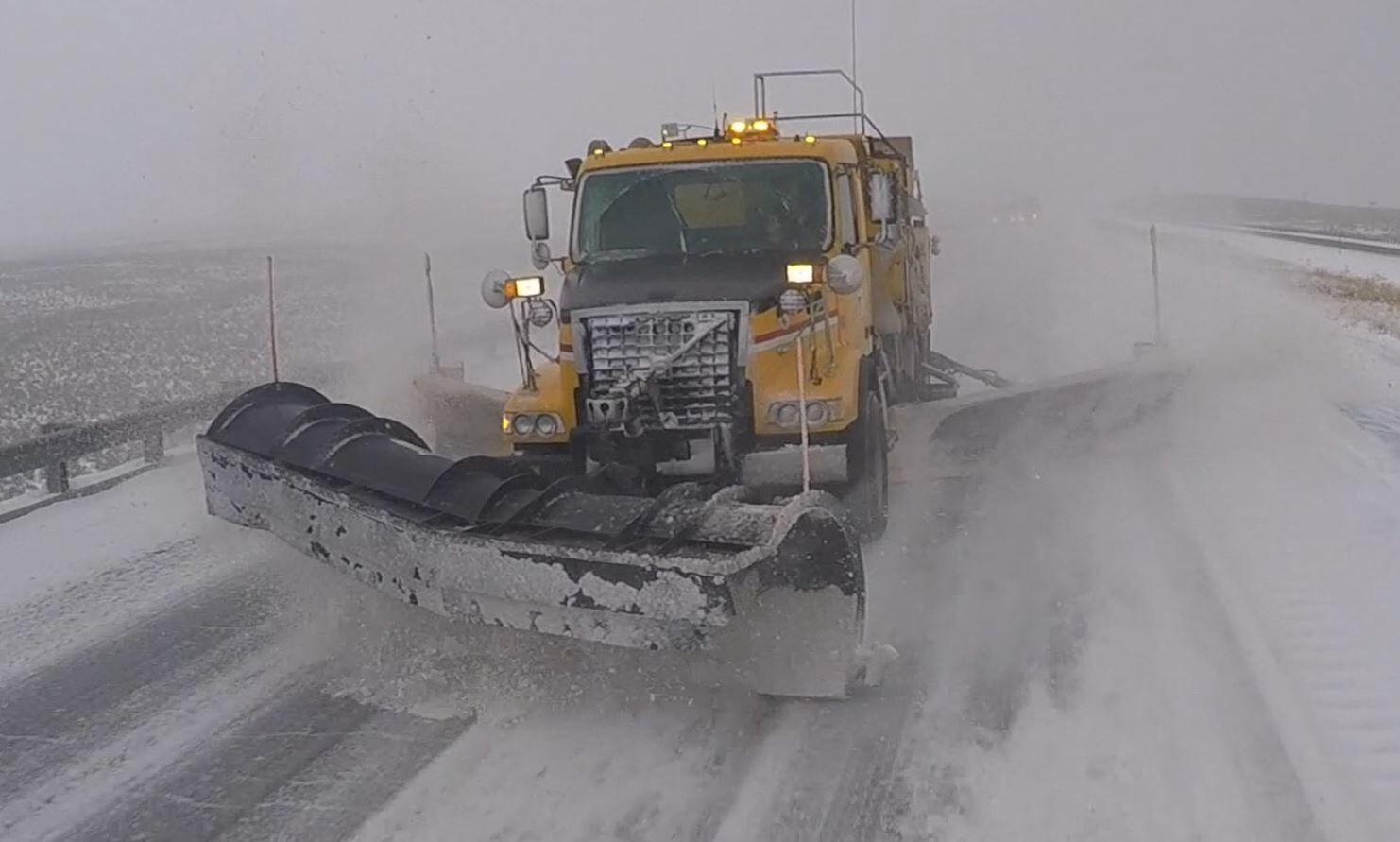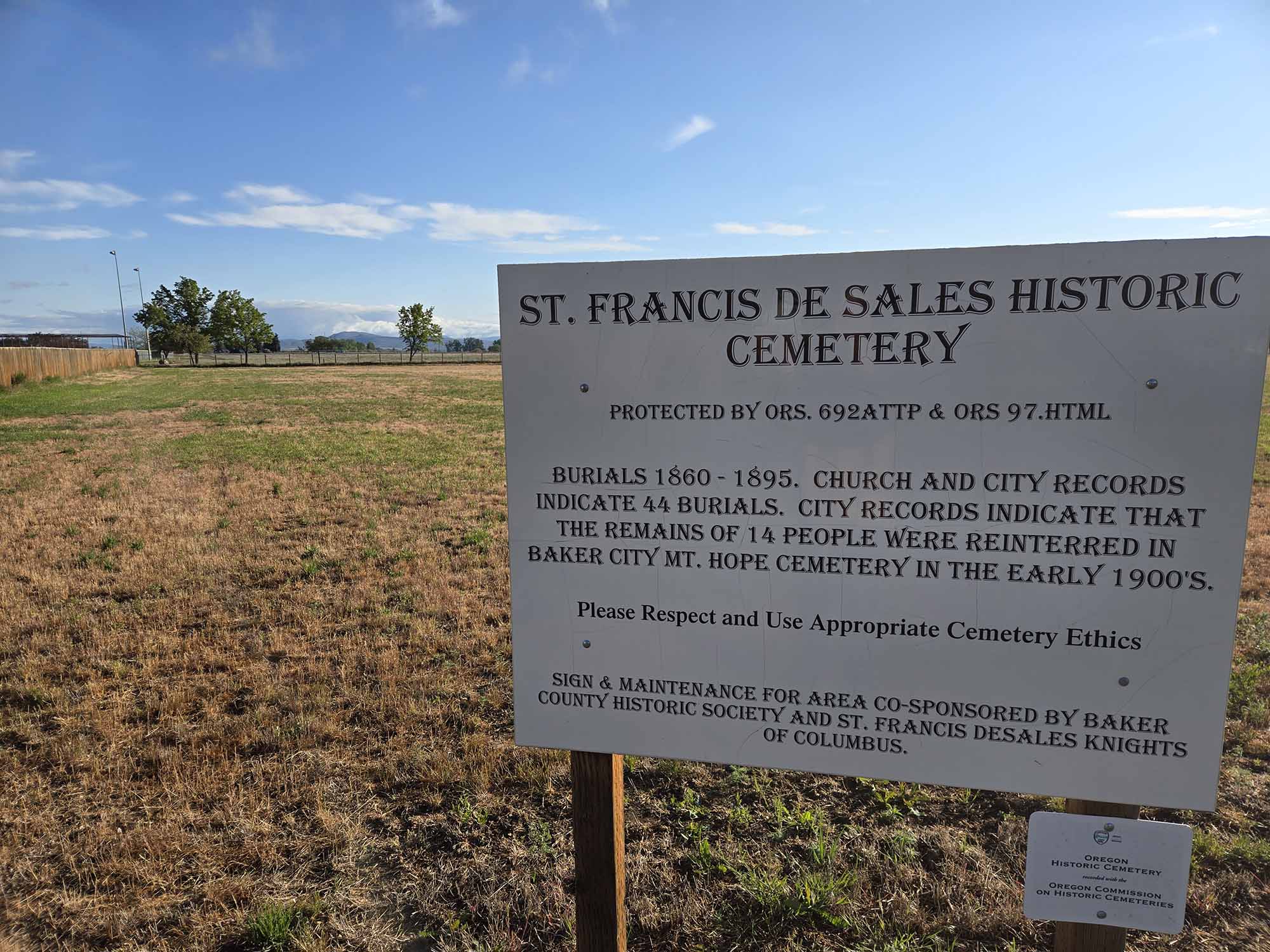Juniper a problem for rangelands
Published 12:00 am Monday, December 26, 2005

- Rancher Don Foster stands beside a freshly felled juniper tree on his family's ranch a few miles south of Baker City. Foster plans to use a $34,000 grant from the Oregon Department of Fish and Wildlife to cut junipers on 400 acres of the ranch. Junipers use so much groundwater that they tend to crowd out grasses and shrubs that serve as forage for the Fosters' cattle and for deer, elk and antelope that roam the ranch. (Baker City Herald/S. John Collins).
By JAYSON JACOBY
Trending
Of the Baker City Herald
Don Foster strolls through a forest of fallen, fragrant trees, smelling trouble on the winter air.
The trees are junipers and their aroma on this damp and blustery December afternoon actually is fresh and pleasant.
Trending
It’s sort of like walking down the aisle of a store which sells only Christmas wreaths, a seasonally appropriate analogy because, as Foster wends between branches laden with blue berries, Christmas is just four days away and the rain-sodden snow is deep enough to bury the juvenile sagebrush here on the Foster Ranch a few miles south of Baker City.
But the clean scent of the junipers hides their sinister side.
The juniper is no friend to the rancher, and Foster, 51, and his son, Matt, 21, drove their Dodge diesel pickup truck to this section of the family’s spread not to inhale the junipers’ woodsy perfume, but to take the trees down with Stihl chain saws.
They were here the day before, too, and the results of their handiwork with the blue-smoke-belching machines are strewn about.
Juniper stumps jut above the snow, their orange heartwood bright against the gray sky.
The trees lie where they fell, their trunks suspended above the ground, held up by branches.
The Fosters, though, see more here than a platoon of severed trees, scattered about this gentle slope like soldiers slain during a fierce battle.
They see thousands of gallons of groundwater that will, come spring and summer, nourish the roots of bunchgrasses and bitterbrush.
They see their cattle growing fat on the lush forage.
And they see deer and elk and antelope devouring the same plants.
What the Fosters see, to put it in broader terms, is a land reborn, freed from the shackles of the dictatorial junipers.
Junipers drink water the way an elephant drinks water.
In early spring, before most plants begin to grow, a single juniper can guzzle as many as 20 gallons of groundwater per day, according to the Oregon State University Extension Service.
By mid-summer, when every shrub, tree and clump of grass can use every drop of moisture it can garner, a juniper’s daily consumption can rise to 30 to 40 gallons, said Cory Parsons, the OSU Extension Service’s agricultural agent in Baker County.
andquot;They’re pulling up an awful lot of water that’s not available for anything else,andquot; Parsons said.
Including the Fosters’ forage.
Junipers don’t hog only water, either.
The trees also suck from the soil certain nutrients, such as nitrogen and phosphorus, that other plants need to thrive, according to the OSU Extension Service.
Put simply, junipers tend to take over wherever they gain a roothold, suppressing other species including the grasses that Don Foster depends on to feed the 600 cow-calf pairs that run on the 10,600-acre ranch he and his brother, Cal, and father, Wayne, run.
Don wants the family’s ground to produce more feed for the deer and the elk and the antelope, too especially during winter, when the cattle are munching hay down in Bowen Valley.
He also hopes to reduce erosion.
Because junipers crowd out other plants, the surface of the ground in juniper thickets tends to be bare dirt.
These naked slopes are more prone to mudslides during cloudbursts and the spring runoff than is ground held in place by a weblike network of roots from grasses and shrubs.
All of which explains why Don, along with Matt, who recently returned from a tour of duty in Iraq with the National Guard, are wielding chain saws.
Reinforcements for a decades-old battle
Don said he began battling junipers on the Foster Ranch in the early 1980s.
He waged something of a guerrilla campaign for more than a decade, sawing down trees here and there when he could spare a few hours between calving and haying and the other inevitable ranch tasks.
Foster rapidly recognized the benefits of even his occasional assaults on the junipers, however.
andquot;It’s amazing how fast everythingandquot; by which he means grasses and shrubs andquot;kind of picks up after you drop some of the bigger junipers,andquot; Don said.
He gestures toward a hillside where, about 20 years ago, he cut down a few dozen junipers. At that time, he said, bunchgrasses and shrubs were sparse beneath the junipers’ dense canopies.
Today the winter-browned grasses stand hip-high and the shrubs are so wide and tall that even a mule deer would have to exert a fair amount of energy to hop over them.
Don was so encouraged by such results that he applied for, and recently received, a $34,000 grant from the Oregon Department of Fish and Wildlife’s Access and Habitat Program.
The money, which comes from a $2 surcharge on hunting licenses and annual auctions and raffles of deer and elk hunting tags, will pay to cut juniper on about 400 acres of the Foster Ranch over the next two years.
Don said he intends to hire a contractor this spring and summer to do much of the cutting.
He said he will concentrate on sections of the ranch where the soils are deep and where he believes grasses and shrubs will recover more quickly once they can partake of the water the junipers are siphoning now.
In exchange for the grant, the Fosters agreed to continue allowing hunters on the ranch if the hunters ask the family’s permission first.
Don said he maintains a list of 50 to 60 people who have hunted on the ranch in the past couple years.
Although Foster’s fight against junipers will escalate over the next two years, some of the trees, even in death, will help the ranch.
Foster said he will carve some of the trees into fence posts.
One piece of lore from the Old West has it that a juniper post will outlast at least two post holes.
Foster also plans to saw many of the trees into firewood.
That’s a decades-old tradition on the ranch, he said, and an interesting twist to this tale:
When Foster steps into his home after a frigid day of doling out hay to cattle, the heat that breathes life back into his fingertips comes from a fire kindled by none other than his longtime foe, the juniper.
andquot;It is,andquot; Foster said, andquot;about all I burn.andquot;









